In a world increasingly dominated by concrete jungles and digital screens, a profound yearning for connection with the natural environment has fueled a significant design movement: nature-inspired spaces. This isn’t just about adding a potted plant; it’s a holistic approach to design that integrates natural elements, patterns, and principles to foster well-being, reduce stress, and enhance productivity. This comprehensive article delves into the burgeoning popularity of nature-inspired aesthetics, exploring its historical roots, the scientific rationale behind its positive impact, and its diverse manifestations across various design disciplines. We’ll uncover how designers are thoughtfully weaving the essence of nature into our built environments, creating spaces that don’t just look good but genuinely make us feel better.
The Innate Connection
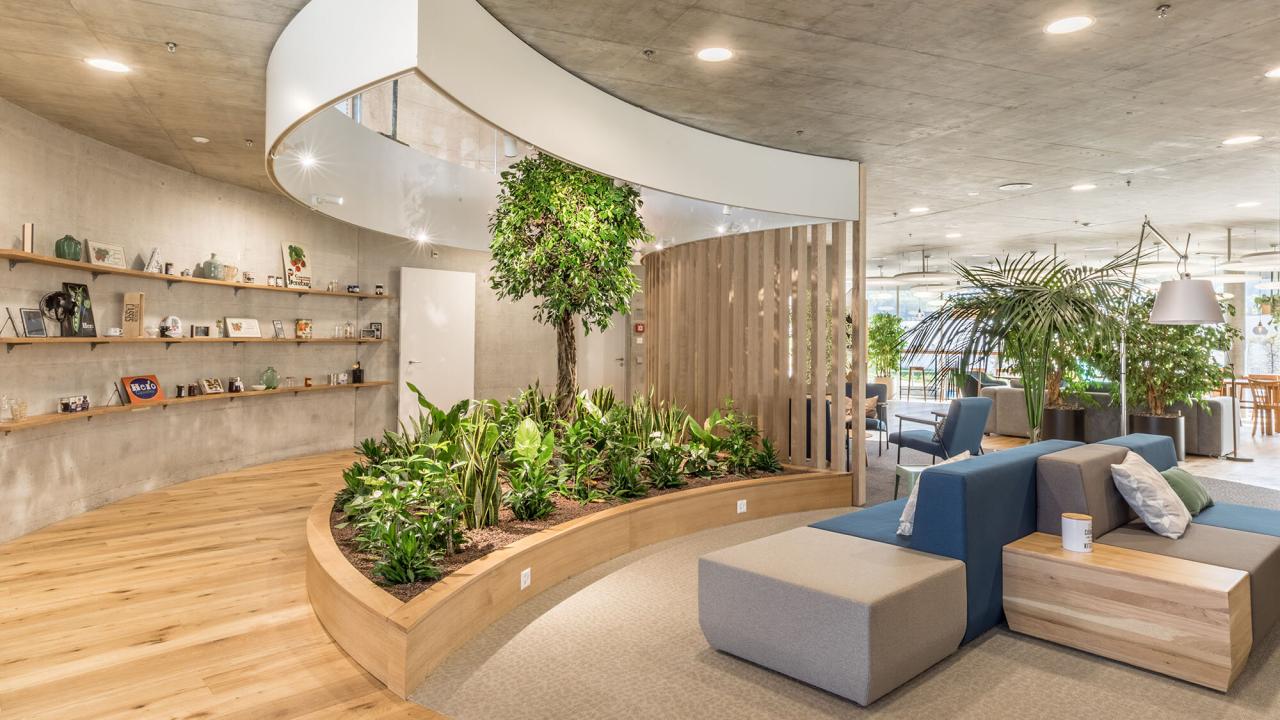
Our deep-seated connection to nature isn’t a modern invention; it’s an evolutionary imperative. Throughout history, human habitats have always been influenced by the natural world.
A. Ancient Civilizations and Sacred Groves: Early human settlements often centered around natural resources, and many cultures held natural sites – mountains, rivers, forests – as sacred. Architecture frequently mimicked natural forms, like caves or tree shelters, providing a sense of security and belonging.
B. Classical Gardens and Courtyards: From the elaborate Persian gardens designed as earthly paradises to the contemplative Japanese Zen gardens, humans have long sought to bring idealized versions of nature into their immediate surroundings for beauty, reflection, and sustenance.
C. The Arts and Crafts Movement (Late 19th/Early 20th Century): Reacting against the industrial revolution’s mass production and loss of craftsmanship, this movement emphasized natural materials, handcrafted elements, and organic forms, drawing direct inspiration from flora and fauna. Figures like William Morris championed nature’s intricate patterns.
D. Frank Lloyd Wright and Organic Architecture: Wright’s philosophy of “organic architecture” in the early to mid-20th century sought to integrate buildings harmoniously with their natural surroundings, using local materials and designs that flowed from the inside out, blurring the lines between built and natural environments.
E. Environmental Movement (Late 20th Century): Growing awareness of ecological issues spurred a more conscious effort to design with the environment in mind, leading to early “green building” concepts and an increased desire for natural elements indoors.
This historical lineage underscores that the human affinity for nature-inspired spaces is not a passing trend but a deep-seated, universal need, now re-emerging with renewed scientific understanding and technological capabilities.
The Science Behind Nature’s Benefits
The thriving popularity of nature-inspired spaces is significantly amplified by the scientific understanding of biophilia – our innate human tendency to connect with nature and other living systems. Research consistently demonstrates the profound positive impact of natural elements on human well-being.
I. Mental and Cognitive Benefits
A. Stress Reduction: Exposure to natural environments or elements lowers cortisol levels, blood pressure, and heart rate, leading to a significant reduction in physiological and psychological stress. Views of nature, even through a window, can be calming.
B. Improved Mood and Emotional Regulation: Natural light, greenery, and organic forms are linked to increased feelings of happiness, vitality, and reduced anxiety or depression. The color green, in particular, is often associated with tranquility.
C. Enhanced Cognitive Function: Studies show that spending time in nature or being exposed to natural elements can improve attention span, creativity, problem-solving abilities, and overall cognitive performance. This is sometimes referred to as “attention restoration theory.”
D. Reduced Mental Fatigue: Natural settings allow for “soft fascination,” where attention is effortlessly captured, leading to mental restoration rather than fatigue, unlike highly demanding urban environments.
E. Improved Learning Outcomes: Educational spaces that incorporate natural light, views of nature, and natural materials have been shown to improve student concentration and academic performance.
These findings provide a compelling rationale for integrating nature into design, moving beyond mere aesthetics to essential human well-being.
II. Physical Health Advantages
A. Faster Healing and Recovery: Patients in healthcare settings with views of nature or access to gardens often experience shorter hospital stays, require less pain medication, and report reduced stress levels.
B. Improved Air Quality: Live plants act as natural air purifiers, absorbing toxins and releasing oxygen, contributing to healthier indoor environments.
C. Optimized Natural Light Exposure: Maximizing natural light exposure helps regulate circadian rhythms, leading to better sleep patterns, improved mood, and enhanced overall health. This also reduces reliance on artificial lighting, saving energy.
D. Increased Physical Activity: Access to green spaces and outdoor areas encourages movement and physical activity, contributing to better cardiovascular health and reduced obesity rates.
E. Reduced Sick Building Syndrome: Incorporating natural ventilation and non-toxic materials, often found in nature-inspired designs, can mitigate symptoms associated with “sick building syndrome” (e.g., headaches, fatigue).
The tangible health benefits underscore that nature-inspired design is not a luxury but a fundamental component of healthy living and working environments.
The Multi-Disciplinary Nature’s Influence in Design
The principles of nature-inspired design are flourishing across diverse creative fields, leading to innovative and harmonious spaces and products.
I. Architecture
In architecture, the goal is to create structures that coexist harmoniously with their environment, often blurring indoor and outdoor boundaries.
A. Biophilic Architecture: Designing buildings with direct connections to nature, such as abundant natural light, ventilation, views of green spaces, and the integration of water features. Examples include buildings with central courtyards or rooftop gardens.
B. Organic Forms and Materials: Mimicking natural shapes and curves (e.g., undulating roofs, tree-like columns) and using natural, locally sourced materials like wood, stone, and clay, often left in their natural state.
C. Green Roofs and Living Walls: Incorporating vegetation directly onto building surfaces to improve insulation, manage stormwater, enhance biodiversity, and provide visual amenity.
D. Natural Ventilation and Passive Cooling: Designing buildings to maximize cross-ventilation and minimize heat gain, reducing reliance on mechanical air conditioning, often through innovative facade systems or strategically placed openings.
E. Daylighting Strategies: Optimizing window placement, skylights, and light shelves to maximize natural light penetration deep into the building’s interior, reducing the need for artificial lighting.
F. Water Features: Integrating ponds, waterfalls, or rain gardens that not only add aesthetic appeal but also contribute to cooling, air purification, and a sense of tranquility.
Nature-inspired architecture seeks to create buildings that are not just structures but active components of the natural ecosystem, providing both environmental and human benefits.
II. Interior Design
Interior design focuses on transforming indoor spaces into havens of calm and vitality through natural elements.
A. Natural Material Palettes: Prioritizing wood (reclaimed, sustainably sourced), stone, cork, linen, cotton, wool, and other natural fibers for flooring, furniture, and textiles, celebrating their inherent textures and warmth.
B. Abundant Plant Life: Incorporating a variety of indoor plants, from large statement pieces to smaller arrangements, for air purification, visual appeal, and a direct connection to living organisms. Vertical gardens are also gaining popularity indoors.
C. Natural Light Maximization: Designing layouts that allow ample natural light to penetrate deep into rooms, utilizing sheer curtains, light-colored surfaces, and open-plan concepts.
D. Organic Shapes and Forms: Incorporating furniture with curved lines, asymmetrical designs, and naturalistic shapes (e.g., pebble-shaped tables, leaf-inspired chairs) that break away from rigid geometries.
E. Earth-Inspired Color Palettes: Using colors derived from nature – soft greens, blues, warm browns, sandy beiges, and muted grays – to create a calming and harmonious backdrop.
F. Views to Nature: Strategically positioning furniture and designing window treatments to maximize views of outdoor greenery, even if it’s just a small patch of garden or a distant tree.
G. Sensory Integration: Engaging multiple senses through the subtle scent of essential oils (e.g., pine, eucalyptus), the sound of a small indoor water feature, or the feel of natural textures.
Nature-inspired interior design aims to create spaces that feel serene, healthy, and deeply connected to the restorative power of the natural world.
III. Product Design
Product design draws inspiration from nature’s forms, efficiency, and material intelligence to create innovative and sustainable objects.
A. Biomimicry in Form and Function: Designing products that emulate natural structures (e.g., honeycomb patterns for strength, leaf venation for efficient flow) or natural processes (e.g., self-cleaning surfaces inspired by lotus leaves).
B. Sustainable Materials: Utilizing rapidly renewable resources (bamboo, cork), recycled content, or biodegradable materials (e.g., mushroom-based packaging, bioplastics from algae) to minimize environmental impact.
C. Organic Shapes and Ergonomics: Designing products with soft, ergonomic curves that fit the human hand or body naturally, often mirroring organic forms found in nature.
D. Natural Finishes and Textures: Emphasizing raw, untreated, or minimally processed materials to celebrate their inherent beauty and tactile qualities (e.g., unpolished wood, natural stone).
E. Modularity and Disassembly: Designing products for easy disassembly and recycling, echoing nature’s cyclical processes of decomposition and regeneration.
F. Water and Energy Efficiency: Products designed to minimize water and energy consumption, often through clever engineering inspired by natural systems.
Nature-inspired product design focuses on creating items that are not only aesthetically pleasing but also inherently efficient, sustainable, and harmonious with their environment.
IV. Urban Planning and Landscape Architecture
At a larger scale, nature-inspired principles are transforming how we design and inhabit our cities.
A. Urban Green Spaces: Creating and preserving parks, community gardens, green corridors, and urban forests that provide ecological benefits, recreational opportunities, and improve air quality.
B. Sustainable Urban Drainage Systems (SUDS): Designing landscapes that mimic natural water cycles, using permeable paving, rain gardens, and swales to manage stormwater runoff, reduce flooding, and replenish groundwater.
C. Bioretention Areas: Landscaped depressions and vegetated swales designed to collect and filter stormwater runoff, removing pollutants and supporting local ecosystems.
D. Connectivity and Walkability: Designing urban environments that encourage walking and cycling, often by creating green pathways and connecting different natural areas.
E. Pollinator-Friendly Landscapes: Designing public and private green spaces with plants that support local pollinators (bees, butterflies), enhancing biodiversity within urban settings.
F. Community Gardens and Urban Agriculture: Integrating food production within cities, fostering community engagement, reducing food miles, and providing fresh produce.
Nature-inspired urban planning aims to create resilient, healthy, and livable cities that thrive in balance with their natural ecosystems.
Innovations Driving the Thrive of Nature-Inspired Spaces
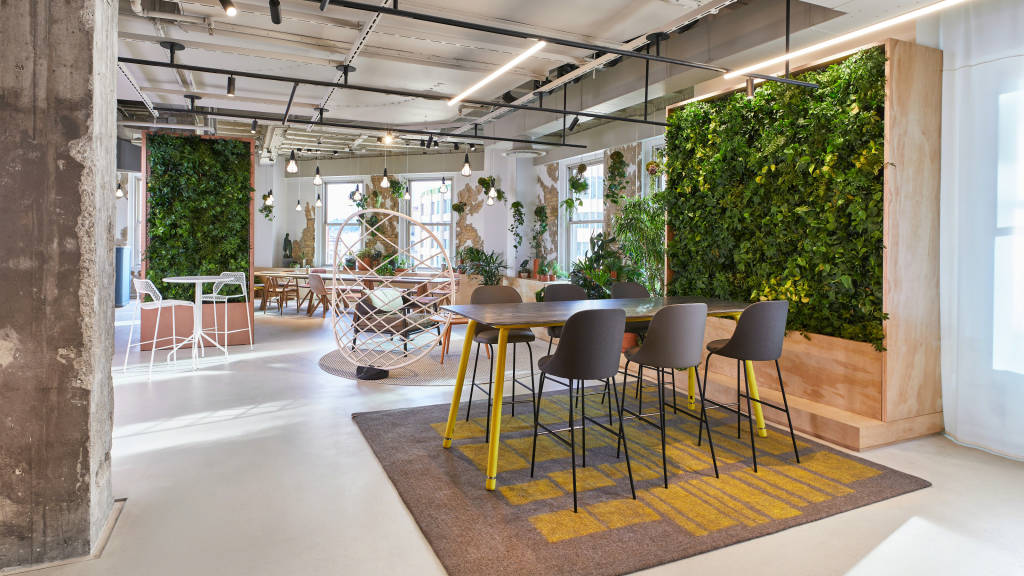
Several technological and conceptual innovations are pushing the boundaries of nature-inspired design, making it more accessible, effective, and sophisticated.
A. Advanced Biomimicry Research: Deeper scientific understanding of natural systems (e.g., photosynthesis, structural biology) is leading to breakthrough material innovations (e.g., self-healing concrete, energy-harvesting surfaces) and structural designs.
B. Digital Fabrication and Parametric Design: Tools like 3D printing and algorithmic design allow designers to create complex, organic forms and intricate patterns inspired by nature with precision and efficiency.
C. Smart Building Technologies and Sensors: IoT sensors can monitor indoor air quality, humidity, light levels, and plant health, allowing buildings to dynamically adjust environments to optimize for human comfort and natural systems.
D. Vertical Farming and Hydroponics/Aeroponics: These technologies allow for the integration of food production into urban spaces and even within buildings, bringing fresh, healthy food closer to consumers and blurring the lines between agriculture and architecture.
E. Data-Driven Biophilic Design: Analyzing data on human response to different natural elements allows designers to create more precisely tailored biophilic interventions that maximize positive outcomes.
F. Sustainable Material Science: Continuous innovation in developing genuinely sustainable, circular, and regenerative materials provides designers with an ever-expanding palette of eco-conscious options that feel and look natural.
G. Immersive Digital Nature Experiences: While not physical, advancements in VR and AR are creating highly realistic virtual nature experiences that can complement physical spaces, especially where direct access to nature is limited.
These innovations are transforming nature-inspired design from a philosophical ideal into a highly practical, measurable, and impactful approach to shaping our environments.
Challenges and Future Outlook
Despite its booming popularity, nature-inspired design faces challenges that must be addressed for its continued growth and impact.
A. Cost and Scalability: High-quality natural materials and sophisticated biophilic integrations can sometimes be more expensive than conventional options, posing a barrier to widespread adoption. Innovation in sustainable sourcing and production can help reduce costs.
B. Maintenance and Upkeep: Living elements like green walls and extensive indoor plants require ongoing maintenance, which needs to be factored into design and operational plans.
C. Authenticity vs. Superficiality: The risk of “greenwashing” or superficial application of natural elements (e.g., a single plant in a stark room) without true integration of biophilic principles can dilute the real benefits.
D. Regulatory Frameworks: Building codes and urban planning regulations need to evolve to fully support and encourage innovative nature-inspired designs, especially at larger scales.
E. Mindset Shift: A fundamental shift in mindset is required among developers, architects, and consumers to prioritize long-term environmental and human well-being over short-term cost savings or conventional aesthetics.
The future of nature-inspired spaces looks incredibly promising, driven by a growing understanding of its benefits and ongoing innovation.
F. Regenerative Design: Moving beyond merely “less bad” to design that actively restores and regenerates ecosystems, with buildings and products acting as positive contributors to the environment.
G. Sensory Immersion: A deeper focus on engaging all senses – the sounds of water, the scent of earth, the feel of natural textures – to create truly immersive natural experiences indoors.
H. Personalized Biophilic Design: AI and smart home technology could allow spaces to dynamically adjust natural elements (e.g., lighting, plant irrigation, air quality) based on individual preferences and real-time environmental data.
I. Urban Reforestation and Biodiversity Corridors: Large-scale projects focused on rewilding urban areas, creating interconnected green spaces that support diverse flora and fauna.
J. Integrated Health and Design: As the link between design and well-being becomes undeniable, nature-inspired design will be even more central to healthcare, education, and workplace design, leading to healthier populations.
Conclusion
The thriving trend of nature-inspired spaces is more than a fleeting aesthetic; it’s a fundamental shift towards creating environments that nurture us, connect us to the planet, and ultimately foster a more sustainable and harmonious future. Our innate human desire for nature will ensure that these spaces continue to flourish and evolve, shaping the very fabric of our built world.

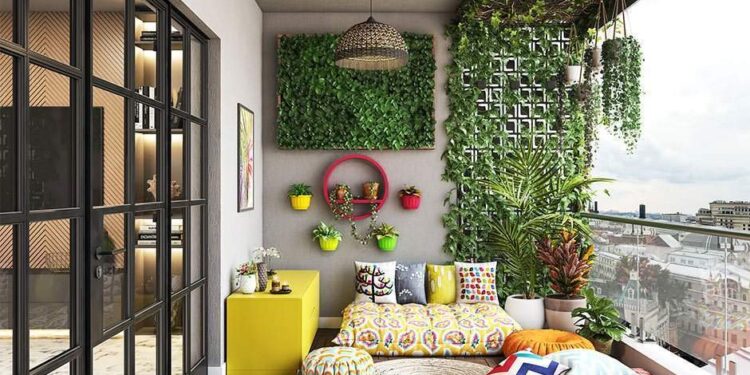
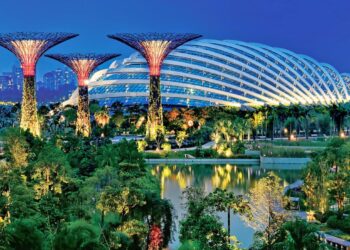

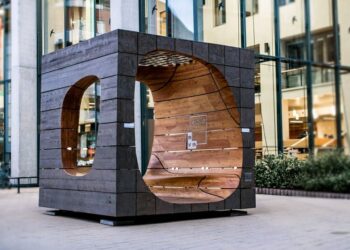

Discussion about this post